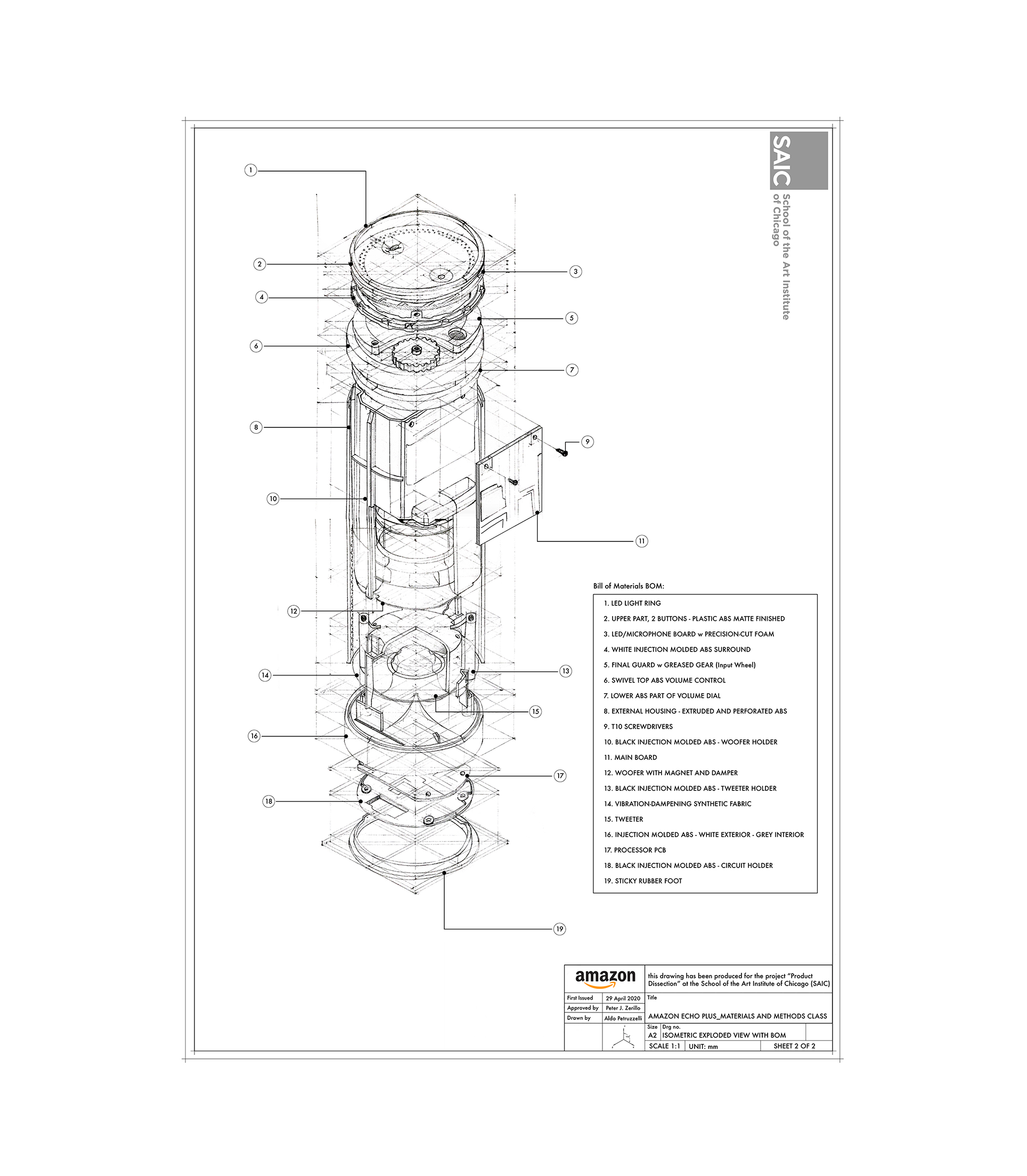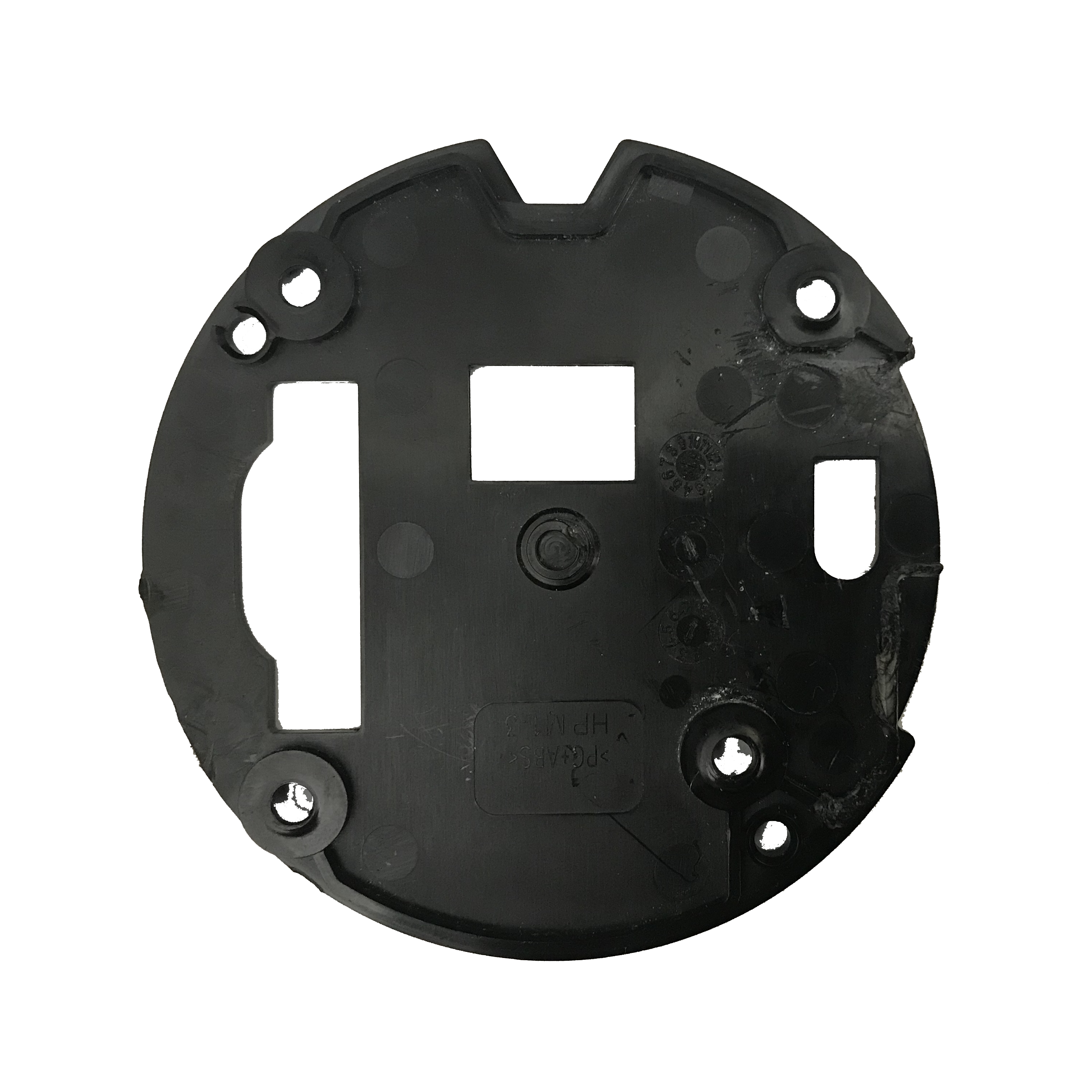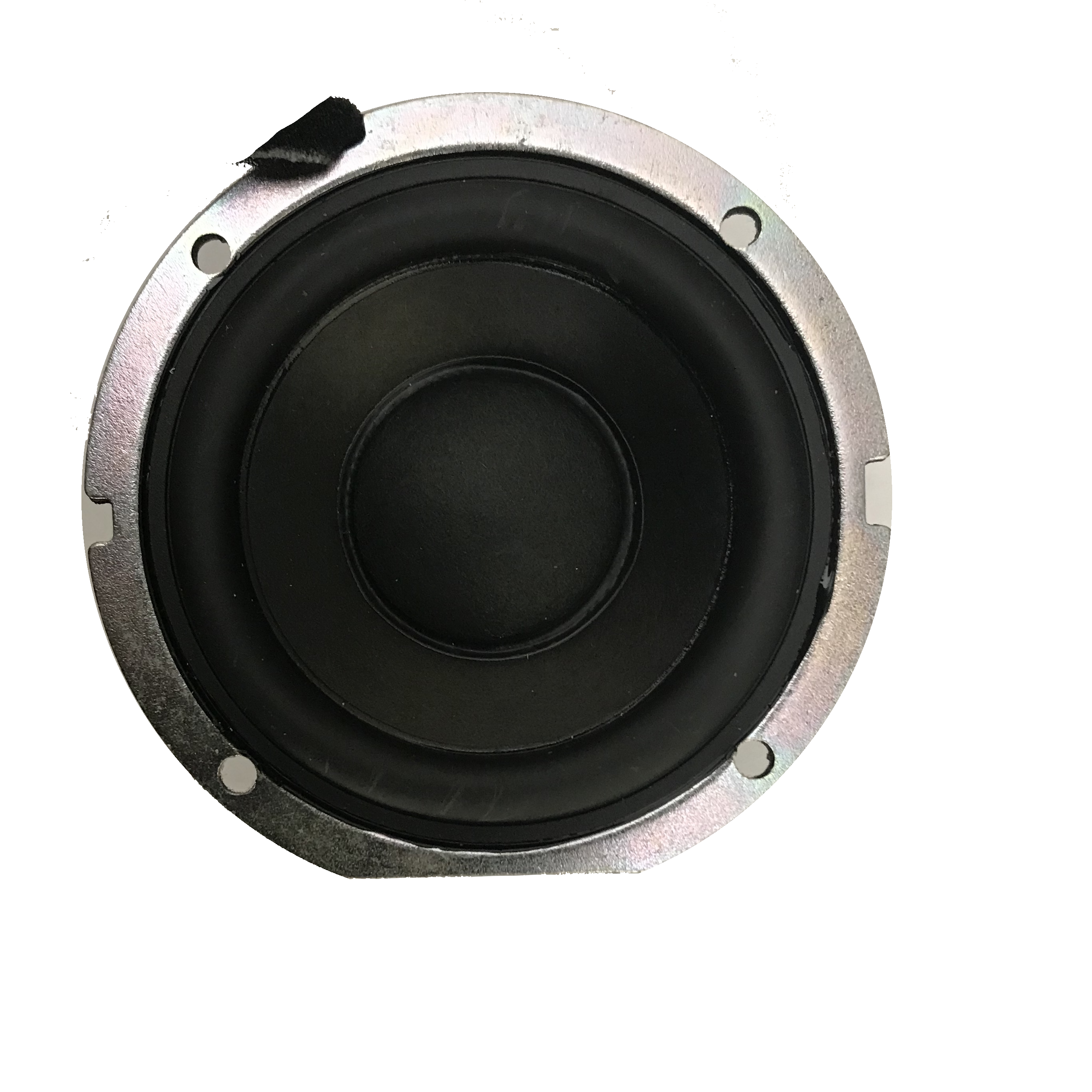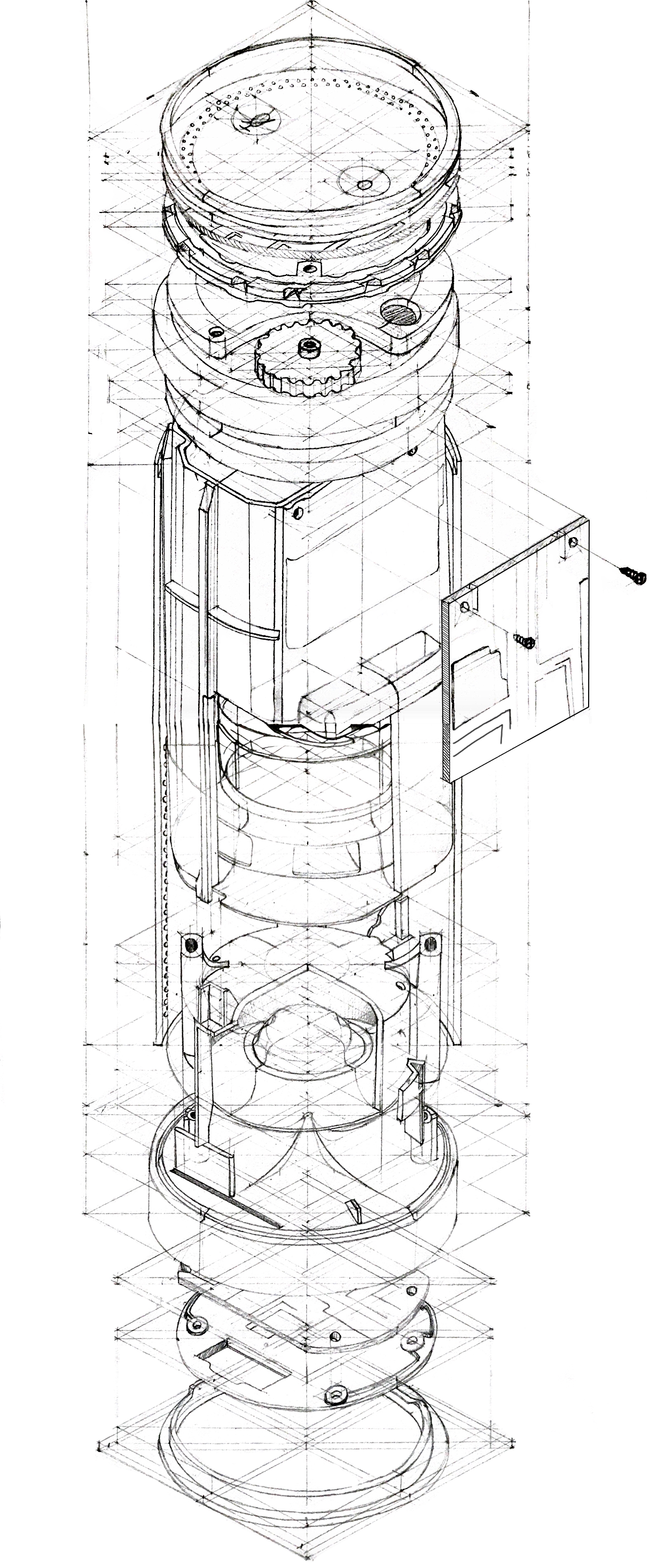Smart Speaker Case Study
April 2019
Product Dissection Report:
The design of the speaker is borrowed from space rockets with several stages stacked within an outer shroud. In terms of economy of space and considering the quality of the speakers and the volume they occupy, it makes sense to have them arranged in this way.
However, they favored the inaccessibility to all the inner components at the expense of repairability, which is to say, even though it is mentioned in the brief that previous objects design may have been less sophisticated, it is also true that they indeed were more repairable.
Nowadays, as long as the product lasts for little more than a year, the company, as well as the designers, are happy with the outcome because the initial design has responded to the need of not being timeless. I would have personally concentred the weight to the lower bottom, and I would have made such part easily removable. Plus, if the middle section houses a
bigger motherboard, the speaker could potentially be "smarter" as it has more computational power from which to draw.
As for the upper part where the button cover is located, I noticed how the Echo's spinning input wheel is similar to that of the Nest Thermostat (from Google), although it is implemented in a completely different way.
This was the first version; later designs have introduced an additional component known as a bass reflex system, which boosts the bass while minimizing distortion. The design of that specific piece, not present in
this version, is actually very clever as it takes full advantage of the limited space inside the Echo while allowing Alexa (Amazon AI) to yell at you across the room.

















